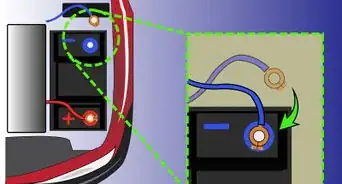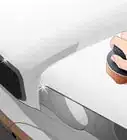This article was co-authored by Hovig Manouchekian. Hovig Manouchekian is an Auto Repair and Design Specialist and the Manager of Funk Brothers Auto, a family-owned business operated since 1925. With over 30 years of experience in the automotive industry, Hovig specializes in the process of auto repair and maintenance. He is also very knowledgeable in common automotive issues and needs including engine repair, battery replacement, and windshield accessory and maintenance. Hovig's knowledge and hard work have contributed to Funk Brothers Auto winning Angie's List Super Service Award for five consecutive years.
This article has been viewed 95,762 times.
Reading a spark plug consists of examining and evaluating the condition and color of the tip of the plug. Learn how to read a spark plug so you can know how your vehicle is performing, foresee potential problems and take care of them early, and have the knowledge of when to change your plugs for best performance.
Steps
Identifying Signs of Spark Plug Damage
-
1Look for light grey or tan metal on a good spark plug. A spark plug that is not damaged will appear light grey or possibly tan. There should be no buildup on the sparking surface of the plug. If you purchased new spark plugs, their colors should be fairly similar.[1]
- A good spark plug will not need to be replaced.
- If you have been having a misfire in the cylinder with a good spark plug, there may be an issue with the plug wire. Try replacing it to see if that solves the problem.
-
2Identify signs of carbon fouling. Carbon fouling often occurs when your vehicle’s engine is running too rich. Running too rich means there is too much fuel in the air/fuel mixture when it is ignited by the spark plug. Look for black soot on the sparking surface of the plug.[2]
- A black, dry soot may develop on the plug when the engine is running too rich.
- You may be able to clean the soot off of the plug and avoid having to replace it. Wipe it down with a rag or spray it with Brake Cleaner to clean it.
- You will need to bring your vehicle to a mechanic to diagnose why it is running rich.
Advertisement -
3Check for wetness on an oil fouled plug. If there is oil leaking in your engine down past worn piston rings or through the valves on your cylinder head, the spark plug may be oil-fouled. Look for wet motor oil on the plug itself.[3]
- Oil fouled plugs will be wet, whereas carbon fouled plugs will be dry.
- You will need to address the oil leak to prevent fouling more spark plugs.
- An oil leak into the engine can cause significant issues. Bring your vehicle to a mechanic for diagnosis and repair.
-
4Look for blisters or burning. If you have been having overheating issues with your engine, you may burn out a spark plug. Look for blistering on the insulator tip of the spark plug or signs of heat damage such as melted plastic or burned metal.[4]
- A heat damaged spark plug will have to be replaced.
- Overheating issues may be caused by worn out or insufficient levels of coolant.
- Add coolant if your vehicle is low, otherwise you may need to drain and flush your radiator.
-
5Check for signs of severe wear. A severely worn spark plug is simply a plug that has been in use for too long. Older vehicles that have never had their spark plugs replaced may experience spark plug failure without fouling them in the ways listed above.[5]
- Severe wear can cause a spark plug to come apart as you remove it. You may also see signs of eroded connections or cracking plastic.
- Severely worn plugs must be replaced.
Removing Spark Plugs
-
1Disconnect the battery. Before working on a vehicle’s electrical system, it is important to disconnect the battery. Use the appropriate hand or socket wrench to loosen the nut holding the ground cable on the negative terminal of the battery, then slide the cable off of the terminal and tuck it to the side.[6]
- You will not need to disconnect the positive wire.
-
2Disconnect the spark plug wire. Spark plug wires come from an ignition source such ignition coil packs or a distributor and connect to the spark plugs via holes in the cylinder head of the engine. Grip the plug wire from the base at the spark plug, and pull back on the wire to disconnect it.[7]
- Plug wires will often come off with a “pop” and may require a bit of force.
- Do not pull on the wire itself, as it may tear the plug wire and leave the base connected to the spark plug.
-
3Clean the area around the spark plug hole. Make sure the area around the spark plug holes is clean of debris, dirt or oil before removing the spark plugs. The spark plugs are screwed directly into the cylinder chamber, so anything that falls into the holes will be falling directly into the engine itself.[8]
- Debris falling into the holes can cause serious damage to the engine the next time you start it.
- If anything does fall into the holes, use a shop vacuum or canned air to get it out before re-installing a spark plug.
-
4Use a spark plug socket to unscrew the plug. Spark plug sockets resemble ordinary sockets but have a rubber cup inside them that grips the spark plug as you unscrew it. A regular socket of the right size will simply unscrew the plug but leave it inside the hole.[9]
- Spark plugs usually come in only one size and spark plug sockets tend to fit plugs in most applications.
-
5Remove the spark plug with the socket. Unscrew the spark plug by turning the wrench in a counter-clockwise motion until it has completely unthreaded. Then slide the spark plug socket up out of the hole gently with the spark plug still inside.[10]
- If the spark plug is still warm, you may want to leave it in the socket as you examine it.
Installing New Spark Plugs
-
1Purchase the correct type of spark plug. Speak to the clerk at your local auto parts store to get help choosing the right spark plug for your engine. Spark plugs burn at varying degrees of intensity and it’s important to choose one designed for use in your vehicle.[11]
- You can also find out what spark plug is right for your vehicle by referring to the service manual for its specific year, make and model.
- Make sure to disconnect the battery prior to moving on.
-
2Use compressed air to clean out the plug hole. Before installing the new spark plug, use compressed air from a can or air compressor to clean out any dirt or debris that may be in the hole you are inserting the plug into. This will prevent any of it from falling into the engine and damaging it.[12]
- Be extremely careful not to drop any debris or small tools into the hole for the spark plug.
- A shop vacuum may be a better choice if debris has already fallen into the hole.
-
3Ensure the new spark plug has the correct gap. The gap on the spark plug’s sparking surface dictates the length of the spark that is used to ignite the air and fuel within the engine. Use a spark plug gapping tool to create the correct gap in the spark plugs before installing them.[13]
- Most spark plug gapping tools are shaped in a circle. Insert the edge of the circle into the gap between the plug and its sparking surface, then turn it until it reaches the gap for your vehicle.
- Find the appropriate gap size for your engine by referring to your vehicle’s service manual.
-
4Insert the plug into the spark plug socket. Insert the spark plug into the rubber boot in the spark plug socket, then attach the socket to a socket extension that’s at least a few inches long. This will allow you to screw the plug in like you might screw in a screw with a screw driver.[14]
- Make sure the extension is long enough for you to be able to screw the plug into place with it.
- Most spark plug tools use a 3/8 inch drive, so use an extension for the same size ratchet.
-
5Screw the plug in by hand. Rotate the plug and extension clockwise without placing too much downward pressure on it. If you force the plug to screw in, you may cross the threads in the engine block, which will result in expensive repairs.[15]
- Turn the extension clockwise until the plug threads into place inside the engine.
- If it suddenly becomes hard and then easy again to screw in the spark plug, remove it and start over to avoid cross threading it.
-
6Tighten the spark plug with a ratchet. Once the plug is hand tight inside the engine, connect a ratchet to the extension and tighten the plug slightly to ensure it will not vibrate out of place. You will not need to put too much pressure on the spark plug to ensure it’s tight.[16]
- Do not overtighten the plug as it may break the spark plug or make it very difficult to remove.
- If you break a spark plug, you will need a professional to remove it.
-
7Reconnect the plug wire. Take the plug wire you disconnected from the previous spark plug and press it firmly onto the back end of the now secured spark plug. The plug wire should pop into place on the spark plug when you know it is firmly connected.[17]
- You may choose to apply a small amount of electrical grease to the spark plug or wire to ensure a strong connection.
- Reconnect the battery once you’re done.
Community Q&A
-
QuestionWhat is the spark plug gap for a 100 cc bike engine?
 Community AnswerYou can check two sources for the gap. First, go to the bike manufacturer's web site and look up the specs on your model. You can also go to the spark plug manufacturer's website and look up the recommended plug number and gap for your bike. You will need a gauge to determine and/or set the gap. Auto parts stores or auto departments (such as those in Walmart, K-Mart, Target, hardware stores, etc.) generally sell gap tools/gauges for under $2.00.
Community AnswerYou can check two sources for the gap. First, go to the bike manufacturer's web site and look up the specs on your model. You can also go to the spark plug manufacturer's website and look up the recommended plug number and gap for your bike. You will need a gauge to determine and/or set the gap. Auto parts stores or auto departments (such as those in Walmart, K-Mart, Target, hardware stores, etc.) generally sell gap tools/gauges for under $2.00. -
QuestionWhat is the gap for a Kawasaki 23 hp zero turn?
 Community AnswerYou can find the right gap by using your manual and checking with a plug gap reader.
Community AnswerYou can find the right gap by using your manual and checking with a plug gap reader.
References
- ↑ http://www.onallcylinders.com/2012/12/20/reading-101-how-to-read-your-spark-plugs/
- ↑ http://www.dummies.com/home-garden/car-repair/how-to-assess-trouble-by-checking-your-spark-plugs/
- ↑ http://www.dummies.com/home-garden/car-repair/how-to-assess-trouble-by-checking-your-spark-plugs/
- ↑ http://www.dummies.com/home-garden/car-repair/how-to-assess-trouble-by-checking-your-spark-plugs/
- ↑ http://www.onallcylinders.com/2012/12/20/reading-101-how-to-read-your-spark-plugs/
- ↑ http://www.dummies.com/home-garden/car-repair/electrical-system/how-to-remove-old-spark-plugs/
- ↑ http://www.dummies.com/home-garden/car-repair/electrical-system/how-to-remove-old-spark-plugs/
- ↑ http://www.dummies.com/home-garden/car-repair/electrical-system/how-to-remove-old-spark-plugs/
- ↑ http://www.dummies.com/home-garden/car-repair/electrical-system/how-to-remove-old-spark-plugs/
- ↑ http://www.dummies.com/home-garden/car-repair/electrical-system/how-to-remove-old-spark-plugs/
- ↑ https://www.pepboys.com/car_care_corner/do_it_yourself_guides/sparkplug_install_and_removal/
- ↑ https://www.pepboys.com/car_care_corner/do_it_yourself_guides/sparkplug_install_and_removal/
- ↑ http://www.dummies.com/home-garden/car-repair/electrical-system/how-to-gap-your-spark-plugs/
- ↑ https://www.pepboys.com/car_care_corner/do_it_yourself_guides/sparkplug_install_and_removal/
- ↑ https://www.pepboys.com/car_care_corner/do_it_yourself_guides/sparkplug_install_and_removal/
- ↑ https://www.pepboys.com/car_care_corner/do_it_yourself_guides/sparkplug_install_and_removal/
- ↑ https://www.pepboys.com/car_care_corner/do_it_yourself_guides/sparkplug_install_and_removal/
About This Article
To read a spark plug, start by checking the color, since an undamaged spark plug will be light grey, or possibly tan. If you notice any black, dry soot on the spark plug, this is a sign of “carbon fouling,” which means your engine has been running too rich, and you should visit a mechanic to figure out the cause. If there’s wet motor oil on the plug, it’s a sign of an oil leak, and if you notice any blistering, melted plastic, or burned metal, it’s a sign that your engine is overheating. To learn how to remove and replace spark plugs, keep reading!
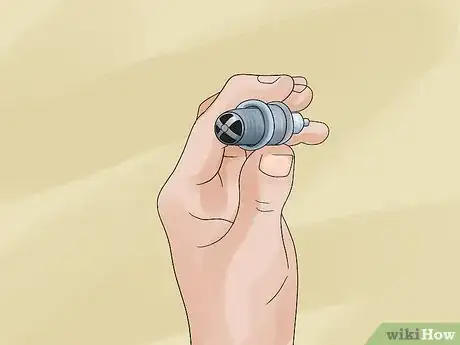
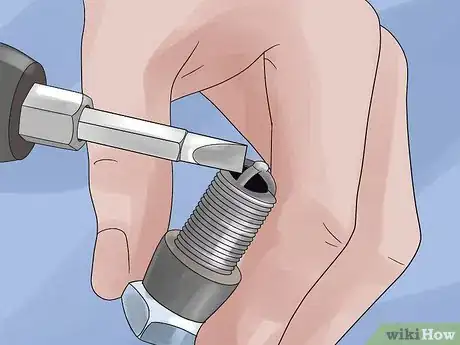
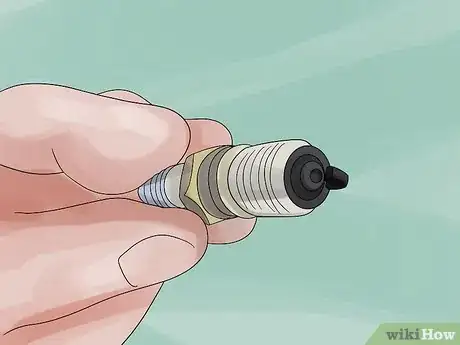
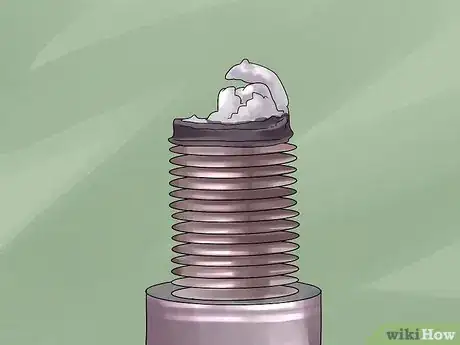
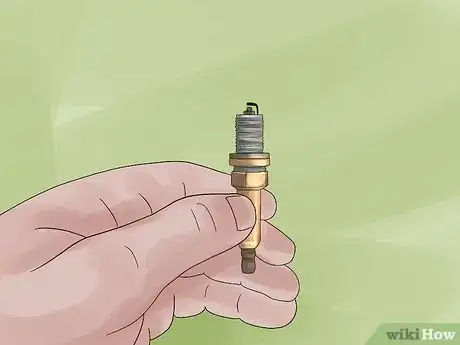
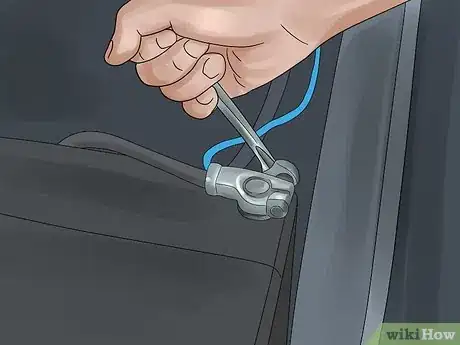
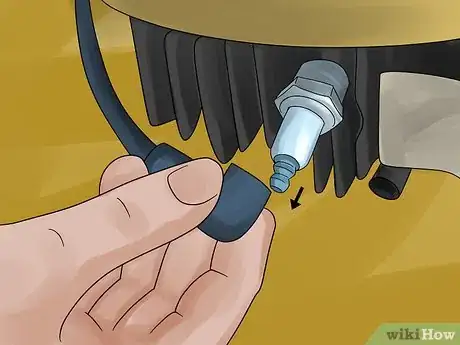
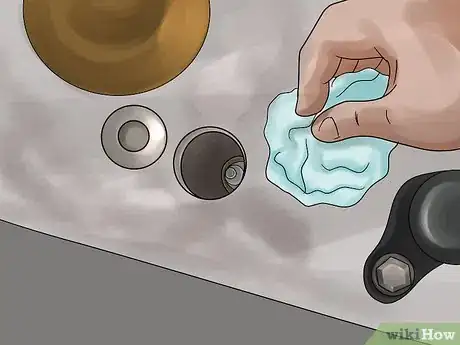
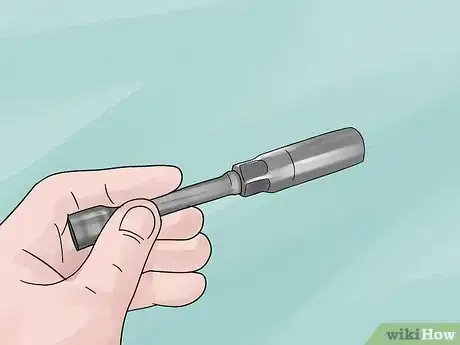

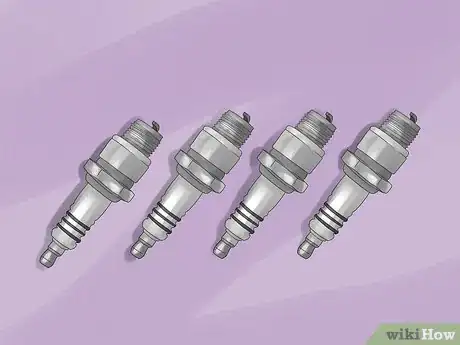
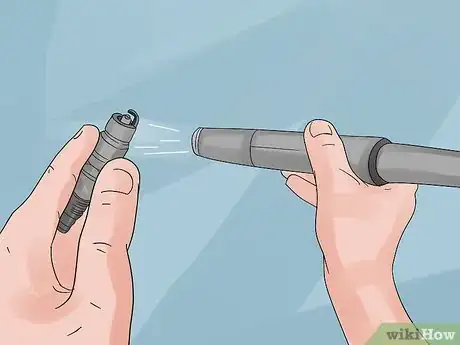
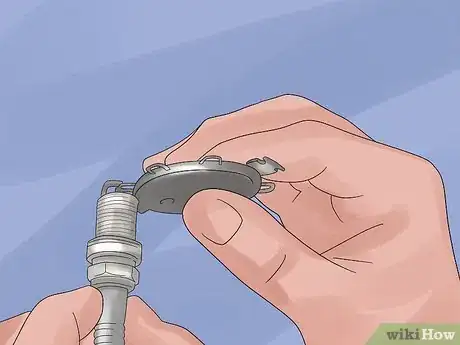
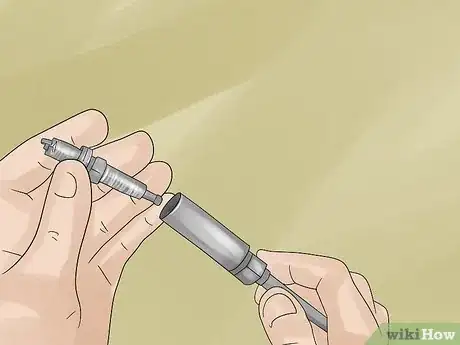
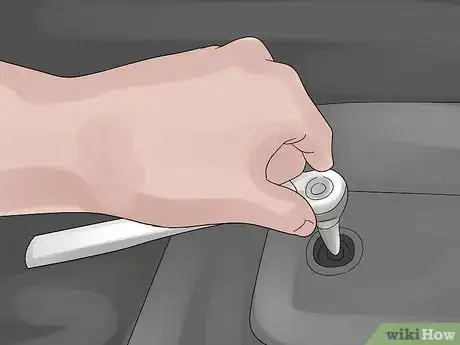
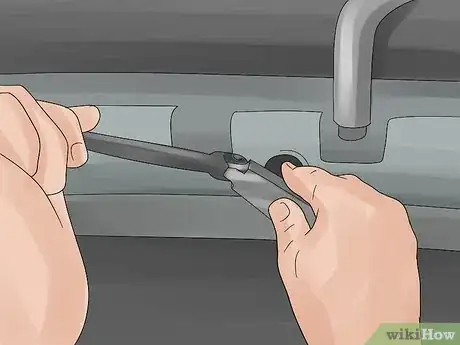
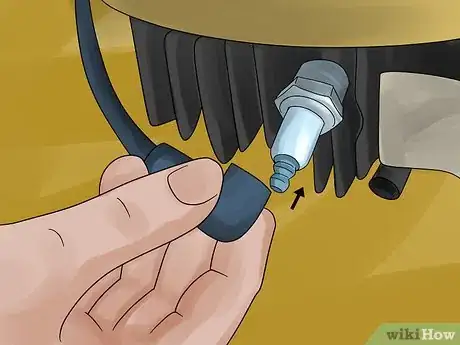
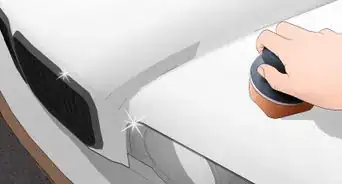





-Beetle-Step-5-Version-3.webp)


